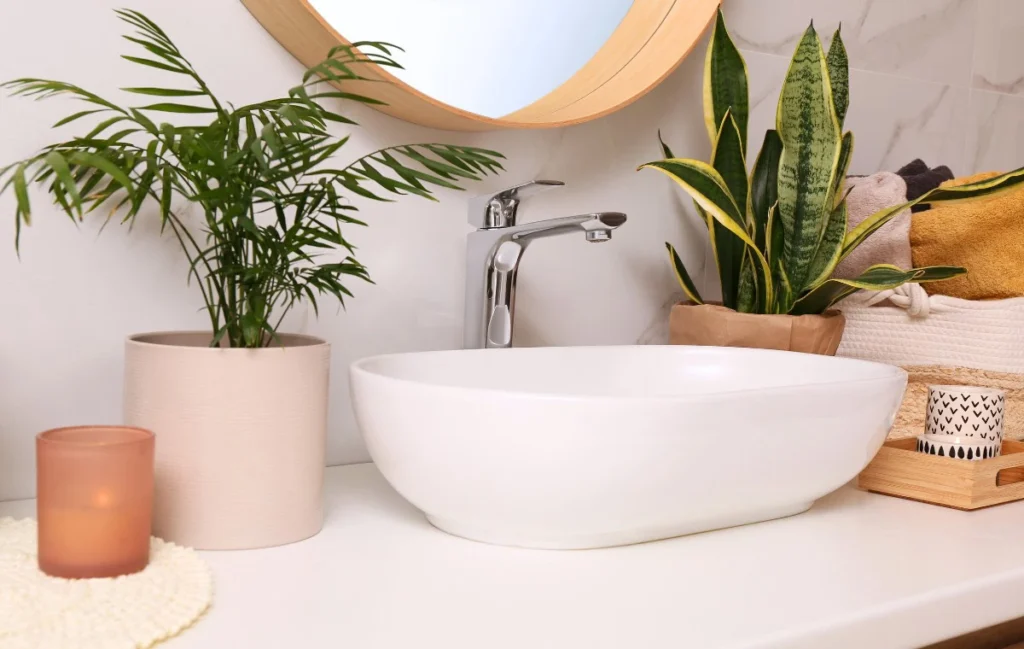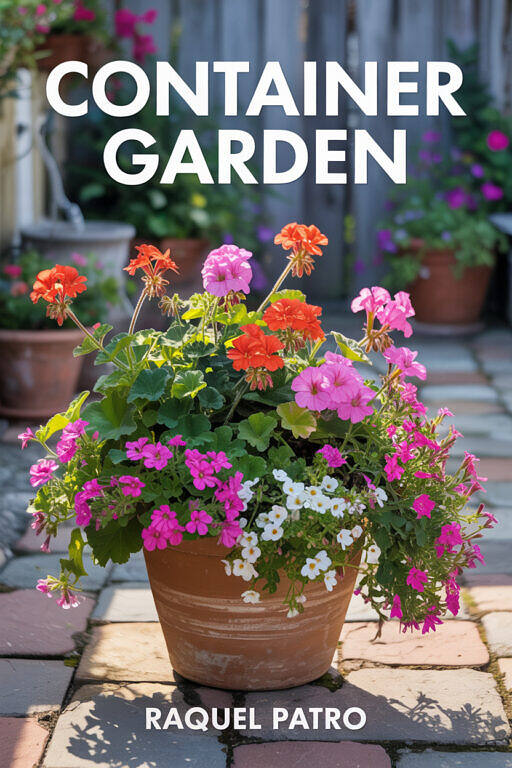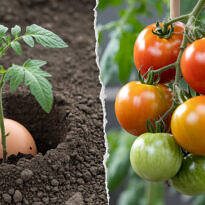Did you know that adding plants to your bathroom can completely transform the space?
Besides bringing freshness and beauty, some plant species help purify the air, control humidity, and even neutralize odors. However, not all plants adapt well to this environment, which typically has low natural light and high humidity.

If you want to incorporate greenery into your bathroom decor but don’t know which species to choose, this article will help! We’ve selected 42 perfect bathroom plants that can withstand humidity, low light, and are easy to care for. But before we explore the best species, let’s understand why adding plants to this space is worth it:
- Air Purification and Moisture Absorption: Some plants naturally filter the air, removing toxins, impurities, and even unpleasant odors. Species like the peace lily (Spathiphyllum wallisii) and snake plant (Dracaena trifasciata) help eliminate compounds such as formaldehyde, benzene, and ammonia, commonly found in cleaning and cosmetic products. Additionally, plants adapted to humid environments absorb excess moisture from the air, helping to regulate humidity levels and reducing the likelihood of mold and mildew.
- Natural and Sophisticated Decor: A bathroom plant adds charm and sophistication to the space. Greenery creates a pleasant contrast with tiles, metals, and mirrors, making the environment more inviting. Depending on your decor style, you can opt for lush foliage for a tropical touch, succulents for a minimalist look, or even climbing plants for a more romantic and elegant effect.
- Relaxation and Well-Being: Contact with nature has proven therapeutic effects. Having plants in the bathroom can make bath time a more relaxing experience, helping to relieve stress and promote a sense of tranquility.
- Low Maintenance and Easy Adaptation: Unlike other areas of the house, the bathroom naturally provides a humid environment, reducing the need for frequent watering. Many plants that thrive in this space require minimal care and can prosper even in low-light conditions.
- Improved Sleep Quality and Respiratory Health: If your bathroom is near the bedroom, plants can improve sleep quality by regulating humidity and oxygen levels. Additionally, some species, like the ZZ plant (Zamioculcas zamiifolia), release oxygen at night, making the air cleaner and fresher.
Now that you know the benefits, check out the 42 best plants for your bathroom!
1. Boston Fern (Nephrolepis exaltata)
The Boston fern is one of the best choices for those looking for a bathroom plant that tolerates high humidity and low light. Its long, trailing fronds add a tropical and lush touch to the space.
Essential Care:
- Prefers indirect light or partial shade.
- Keep the soil slightly moist, but avoid overwatering.
- Thrives in the bathroom’s natural humidity, reducing the need for frequent watering.
2. Pothos (Epipremnum aureum)
The Pothos is one of the most resilient indoor plants. Its glossy green foliage, often with golden or white variegation, grows in a trailing or climbing form, making it a great decorative option.
Ideal Conditions:
- Tolerates low light but grows best with indirect light.
- Moderate watering, avoiding waterlogging.
- Handles bathroom humidity well.
Tip: It can be grown in hanging pots or vertical supports to optimize space.
3. Peace Lily (Spathiphyllum wallisii)
The peace lily is an elegant ornamental plant known for its ability to purify the air by removing toxins like formaldehyde and benzene. Its white flowers contrast beautifully with its dark green foliage.
Main Requirements:
- Prefers diffused light but tolerates lower-light environments.
- Keep the soil slightly moist, without excess water.
- Leaves may accumulate dust, so occasional cleaning is recommended.
Bonus: Helps neutralize odors and improve air quality.
4. Snake Plant (Dracaena trifasciata)
If you’re looking for an extremely resilient and low-maintenance bathroom plant, the snake plant is the ideal choice. It survives in adverse conditions, including low light and extended periods without watering.
Advantages:
- Filters pollutants such as formaldehyde and benzene.
- Tolerates high humidity and low natural light.
- Requires infrequent watering – every 10 to 15 days, depending on the humidity levels.
Fun Fact: In some cultures, the snake plant is believed to ward off negative energy.
5. ZZ Plant (Zamioculcas zamiifolia)
The ZZ plant is a sophisticated and modern option, known for its incredible resilience. Its glossy, dark green leaves add an elegant touch to the bathroom.
Care Factors:
- Adapts to low-light environments and moderate humidity.
- Infrequent watering – only when the soil is dry.
- Prefers well-draining pots to avoid water buildup.
Decor Tip: Pair the ZZ plant with minimalist ceramic pots for a contemporary look.
6. Tricolor Prayer Plant (Maranta leuconeura)
The Tricolor Prayer Plant stands out due to the vibrant patterns on its leaves, which display shades of green, pink, and red. This plant has a fascinating trait: its leaves move throughout the day, folding up at night.
How to care:
- Requires indirect light and high humidity.
- The soil should be consistently moist but not waterlogged.
- Avoid exposure to cold drafts.
Bonus: Its vivid colors add an extra charm to the bathroom.
7. Swiss Cheese Plant (Monstera deliciosa)
The Swiss Cheese Plant is an excellent choice for spacious bathrooms. Its distinctive split leaves bring a tropical and exotic feel to the space.
Ideal conditions:
- Diffuse light or partial shade.
- Needs slightly moist but well-draining soil.
- If it grows too large, it can be pruned to control its size.
Tip: Perfect for creating an “urban jungle” bathroom style.
8. Anthurium (Anthurium andraeanum)
The Anthurium is a tropical plant with glossy leaves and long-lasting flowers, typically red, white, or pink. It thrives in the humidity of a bathroom and adds a sophisticated touch to the environment.
Main requirements:
- Indirect light and moist soil.
- Regular watering, avoiding waterlogging.
- Prefers temperatures between 64°F and 77°F (18°C and 25°C).
Fun fact: Anthurium symbolizes hospitality and elegance.
9. Peperomia (Peperomia spp.)
Peperomias are compact and resilient plants, perfect for small spaces. Their waxy leaves help retain moisture, making them ideal for bathrooms.
Basic care:
- Indirect light or shade.
- Low watering needs – tolerates short dry periods.
- Does not tolerate excessive soil moisture.
Tip: Perfect for shelves and decorative niches.
10. Maidenhair Fern (Adiantum raddianum)
The Maidenhair Fern is known for its delicate appearance and ability to absorb moisture from the air. Its small, light leaves create a soft and elegant effect.
Growing requirements:
- Requires high humidity and indirect light.
- Must be watered frequently but not overwatered.
- Avoid sudden temperature changes.
Note: Since it is more sensitive, it adapts better to well-lit bathrooms.
11. Moth Orchid (Phalaenopsis spp.)
The Moth Orchid, also known as the Butterfly Orchid, is one of the most popular indoor decorative orchids. Its delicate beauty and long-lasting blooms make it a great choice for bathrooms.
Ideal conditions:
- Prefers indirect light and high humidity.
- Water only when the substrate is dry.
- Thrives in temperatures between 64°F and 77°F (18°C and 25°C).
Tip: Place it near a shaded window to encourage blooming.
12. English Ivy (Hedera helix)
English Ivy is a versatile and highly resilient climbing plant. Besides decorating the bathroom with its trailing growth, it also helps purify the air.
Basic care:
- Tolerates low light and high humidity.
- Water when the soil is dry on the surface.
- Can be grown in hanging pots or trellises.
Fun fact: English Ivy is one of the most effective plants for removing airborne toxins.
13. Lady Palm (Rhapis excelsa)
The Lady Palm is a great option for spacious bathrooms. Its long, slender leaves bring a tropical and elegant touch to the space.
Main needs:
- Prefers indirect light but tolerates partial shade.
- Needs regular watering without waterlogging.
- Slow-growing and adaptable to pots.
Bonus: It thrives in bathroom humidity, is pest-resistant, and easy to maintain.
14. Arrowhead Plant (Syngonium podophyllum)
The Arrowhead Plant is a fast-growing vine with arrow-shaped leaves that come in shades of green, white, and pink.
Ideal conditions:
- Adapts to low light.
- Prefers high humidity and slightly moist soil.
- Can be grown as a hanging plant or trained on supports.
Tip: Ideal for small bathrooms due to its compact size.
15. Corn Plant (Dracaena fragrans)
The corn plant is an ornamental plant known for its long, arching leaves. In addition to decorating spaces, it also purifies the air and helps regulate humidity.
Main Care Tips:
- Tolerates low light and humidity variations.
- Moderate watering, allowing the soil to dry between waterings.
- Prefers temperatures between 64°F and 79°F (18°C and 26°C).
Fun Fact: This plant is highly recommended by NASA for removing toxins from the environment.
16. Nerve Plant (Fittonia albivenis)
The nerve plant, also called the mosaic plant, stands out for the decorative patterns on its leaves, which can be green with white, red, or pink veins.
Basic Care:
- Requires high humidity and indirect light.
- Keep the soil slightly moist at all times.
- Avoid direct sunlight, as it may scorch the leaves.
Tip: Perfect for terrariums and small pots in bathrooms.
17. Calathea (Calathea spp.)
The calathea is known for its decorative foliage and its nighttime movement—closing at night and opening in the morning.
Growing Requirements:
- Prefers humid and shaded environments.
- Needs soil that is consistently moist but well-drained.
- Does not tolerate dry air, making it ideal for bathrooms.
Tip: Some varieties, such as Calathea ornata, feature pink stripes that enhance interior décor.
18. Pleomele (Dracaena reflexa)
The pleomele is a compact, upright-growing plant with beautiful variegated leaves featuring creamy margins, perfect for well-lit indoor spaces.
Ideal Conditions:
- Tolerates low light but thrives with abundant indirect light.
- Moderate watering, avoiding excess moisture.
- Thrives in high humidity, making it ideal for bathrooms.
Bonus: Besides being decorative, it helps filter air pollutants.
19. Staghorn Fern (Platycerium bifurcatum)
The staghorn fern is an epiphytic fern, meaning it grows attached to tree trunks and wooden plaques. Its exotic appearance makes it an excellent choice for vertical decoration.
Growing Factors:
- Adapts well to humid and shaded environments.
- Does not require soil—grows mounted on wooden plaques or fiber boards.
- Water by immersion or mist regularly.
Tip: Create a vertical panel with staghorn ferns for a natural effect in the bathroom.
20. Areca Palm (Dypsis lutescens)
The Areca palm is a medium-sized plant that adds a tropical touch to the bathroom. Its slender, arching fronds bring lightness and elegance to the space.
Essential Care:
- Prefers indirect light but tolerates partial shade.
- The soil should be kept slightly moist but well-draining.
- Benefits from the bathroom’s humidity, reducing the need for misting.
Tip: If your bathroom has a window, place the palm nearby to encourage healthy growth.
21. Parlor Palm (Chamaedorea elegans)
The Parlor palm is a small, compact-growing palm, ideal for small bathrooms. Its delicate appearance blends well with any decor style.
Growing Requirements:
- Tolerates low light but thrives in diffused light.
- The soil should be kept slightly moist.
- Prefers environments with high humidity.
Tip: Perfect for placement in strategic corners of the bathroom.
22. Baby’s Tears (Soleirolia soleirolii)
Also known as Soleirolia, this plant forms a delicate green carpet, perfect for terrariums or hanging pots in the bathroom.
Ideal Conditions:
- Prefers humid and shaded environments.
- Requires consistently moist but well-draining soil.
- Tolerates low light but grows better with indirect illumination.
Tip: Use it in hanging pots to create a cascading green effect.
23. Rex Begonia (Begonia rex)
The Rex begonia is an ornamental plant known for its colorful and textured leaves, ranging in shades of green, purple, silver, and red.
Growing Requirements:
- Adapts well to low light and high humidity.
- The soil should be kept slightly moist.
- Avoid watering the leaves directly to prevent fungal diseases.
Tip: Ideal for adding a vibrant and sophisticated touch to the bathroom.
24. Tradescantia (Tradescantia zebrina)
The Tradescantia, also called wandering jew, is a fast-growing trailing plant, perfect for small bathrooms.
Essential Care:
- Tolerates low light, but its colors are more vibrant with indirect light.
- Moderate watering, avoiding waterlogging.
- Adapts well to bathroom humidity.
Fun Fact: Its leaves have metallic tones, creating a unique decorative effect.
25. Grape Ivy (Cissus rhombifolia)
The Grape ivy, also known as Venezuelan treebine, is a fast-growing vine with glossy leaves, perfect for indoor spaces.
Ideal Conditions:
- Prefers indirect light and tolerates partial shade.
- Thrives in moderate humidity without waterlogging.
- Grows well in hanging pots or trellises.
Tip: Can be grown as a trailing plant, creating a lush cascading effect in the bathroom.
26. Spider Plant (Chlorophytum comosum)
The spider plant, also known as ribbon plant, is one of the easiest plants to care for. Its green leaves with white stripes create a light and elegant look.
Basic care:
- Adaptable to low light conditions.
- Moderate watering – prefers slightly moist soil.
- Thrives in hanging pots.
Bonus: In addition to being a great bathroom plant, it is effective at purifying the air.
27. Rabbit’s Foot Fern (Davallia fejeensis)
The rabbit’s foot fern is a lush fern with finely divided leaves, creating a sophisticated ornamental effect.
Ideal conditions:
- Requires diffused light and high humidity.
- Prefers slightly moist but well-draining soil.
- Grows well in hanging pots.
Tip: If your bathroom has little ventilation, mist the leaves regularly to maintain humidity.
28. Lucky Bamboo (Dracaena sanderiana)
The lucky bamboo is a plant associated with Feng Shui, known for attracting good energy and prosperity.
Growing requirements:
- Thrives in low light conditions.
- Can be grown in water or soil.
- Prefers temperatures between 64°F and 86°F (18°C – 30°C).
Bonus: Its vertical growth makes it ideal for small bathrooms, as it doesn’t take up much space.
29. Turtle Vine (Callisia repens)
The turtle vine, also known as chain of coins, is a trailing plant with small green or purple-tinged leaves.
Growing requirements:
- Tolerates low light but grows best with indirect light.
- Prefers slightly moist but well-draining soil.
- Grows quickly and can be pruned.
Tip: Perfect for those looking for a low-maintenance plant with vigorous growth.
30. Mistletoe Cactus (Rhipsalis baccifera)
The mistletoe cactus is an epiphytic cactus species that doesn’t require direct sunlight and adapts well to humid environments.
Ideal conditions:
- Tolerates low light and high humidity.
- Moderate watering – allow the soil to dry out between waterings.
- Thrives in hanging pots, creating a cascading effect.
Fun fact: Unlike traditional cacti, this species doesn’t need full sun to thrive.
31. Peperomia Cupid (Peperomia scandens)
The Peperomia cupid is a hardy trailing plant with heart-shaped, light-green leaves.
Ideal conditions:
- Adapts to low light and high humidity.
- Prefers slightly moist soil but should not be waterlogged.
- Grows well as a climber or trailing plant.
Tip: Perfect for placement on high shelves or hanging supports.
32. Monstera adansonii
The Monstera adansonii is a rare variety of the Swiss cheese plant, known for its perforated leaves and exotic appearance.
Basic care:
- Prefers indirect light and high humidity.
- The soil should be kept slightly moist but well-draining.
- Moderate growth, can be trained with a support.
Fun fact: Its leaves have even more holes than those of the Monstera deliciosa, making it a unique choice for bathroom décor.
33. Polka Dot Begonia (Begonia maculata)
The Polka Dot Begonia is one of the most ornamental and sophisticated plants, featuring green leaves speckled with white and a reddish underside.
Essential Care:
- Tolerates low light but prefers indirect sunlight.
- Requires slightly moist soil, avoiding waterlogging.
- Avoid watering the leaves directly.
Tip: Pair it with modern-designed pots to enhance its unique beauty.
34. Philodendron Brasil (Philodendron hederaceum ‘Brasil’)
The Philodendron Brasil is a tropical climbing plant with green leaves featuring yellow stripes, perfect for creating a cascading effect in bathrooms.
Ideal Conditions:
- Prefers indirect light but tolerates partial shade.
- Thrives in humid and well-drained environments.
- Can be trained to grow vertically.
Fun Fact: This species grows quickly and requires minimal maintenance.
35. Dumb Cane (Dieffenbachia spp.)
The Dumb Cane is a lush and highly resilient plant, ideal for well-lit bathrooms.
Basic Care:
- Requires diffused light and tolerates humid environments.
- The soil should be kept slightly moist.
- Keep out of reach of children and pets, as it is toxic.
Tip: Its large, variegated foliage adds sophistication to any space.
36. Fat Boy (Philodendron martianum)
The Fat Boy is a compact-growing philodendron with broad leaves, widely used in interior decoration.
Ideal Conditions:
- Prefers indirect light and high humidity.
- Needs well-drained but slightly moist soil.
- Can be grown in medium to large pots.
Bonus: Its glossy leaves create a tropical effect in bathrooms.
37. Amazon Fern (Phlebodium decumanum)
The Amazon Fern is one of the best choices for bathrooms, as it thrives in humidity and has a lush appearance.
Essential Care:
- Prefers indirect light and high humidity.
- The soil should remain consistently moist, but not waterlogged.
- Grows well in hanging pots.
Tip: Mist the leaves regularly to maintain optimal humidity levels.
38. African Spear Plant (Dracaena angolensis)
The African Spear Plant is a variety of the snake plant, featuring cylindrical leaves and vertical growth.
Ideal Conditions:
- Tolerates low light and humidity fluctuations.
- Requires moderate watering – drought-resistant.
- Grows slowly, making it ideal for compact spaces.
Bonus: It purifies the air and requires minimal maintenance.
39. Chinese Money Plant (Pilea peperomioides)
The Chinese Money Plant, also known as the Friendship Plant, features round leaves and compact growth.
Basic Care:
- Prefers indirect light and moderate humidity.
- The soil should always be kept slightly moist.
- Thrives best in small pots.
Fun Fact: Its round, glossy leaves add charm to any décor.
40. Zebra Peperomia (Peperomia sandersii)
The zebra peperomia has rounded leaves with silver stripes that resemble a watermelon rind.
Ideal Conditions:
- Tolerates low light and high humidity.
- The soil should be kept slightly moist.
- Compact growth, ideal for small spaces.
Tip: Great for decorating niches and bathroom shelves.
41. Lace Fern (Asparagus setaceus)
The lace fern has fine, delicate foliage that creates an airy and elegant effect in the bathroom.
Basic Care:
- Adapts to low light and high humidity.
- Requires well-drained and slightly moist soil.
- Can be grown as a trailing or upright plant.
Tip: Perfect for bathrooms with rustic or modern décor.
42. Cast-Iron Plant (Aspidistra elatior)
The cast-iron plant is one of the hardiest plants for bathrooms, tolerating low light and high humidity.
Ideal conditions:
- Tolerates low light and infrequent watering.
- Grows slowly but adapts well to bathrooms.
- Its broad leaves create a tropical effect.
Bonus: Perfect for those looking for a low-maintenance plant.
How do I care for plants in my bathroom?
To ensure your plant grows healthy, it is essential to consider factors such as humidity, lighting, and ventilation before selecting the ideal species. After all, not all plants adapt well to typical bathroom conditions, such as high humidity, low natural light, and temperature fluctuations. Before choosing your plant, take the following factors into account:
1. High Humidity and Good Drainage:
The bathroom is one of the most humid rooms in the house, which can be an advantage for tropical species but a problem for plants that do not tolerate excess moisture. To prevent root rot, follow these tips:
- Choose pots with drainage holes to avoid water accumulation.
- Use a light and airy substrate that allows good air circulation around the roots.
- Avoid overwatering—often, bathroom humidity is enough to keep the plant hydrated.
2. Lighting: Natural or Artificial?
Most bathrooms receive little or no natural light, which can be a challenge for some plants. To ensure good growth, consider the following:
- If the bathroom has a window: Opt for plants that need indirect light, such as ferns, pothos, and calatheas.
- If the bathroom has no window: Choose low-light-resistant species like snake plants, ZZ plants, and philodendrons. Monitor their growth and, if necessary, rotate them to a brighter location to recover.
- Artificial lighting: If the bathroom lacks sufficient natural light, LED bulbs with the appropriate spectrum can support plant growth.
3. Temperature and Air Circulation
Bathrooms experience sudden temperature changes due to shower steam and, in some homes, air conditioning. To prevent thermal stress in plants, follow these recommendations:
- Avoid placing plants directly under hot shower steam.
- Choose tropical plants that tolerate temperature fluctuations.
- Whenever possible, keep the space ventilated by opening the door or window after bathing.
4. Choosing the Right Plant:
Each bathroom has unique characteristics, and plant selection should consider factors such as available space, lighting, and humidity levels. Here are some suggestions:
- For small bathrooms: Choose compact plants like peperomias and fittonias.
- For large bathrooms: Opt for lush foliage like monstera and lady palms.
- For decorating shelves and niches: Pothos and ivies are ideal for trailing growth.
- For floor pots: Peace lilies and aglaonemas are great options.
- For windowless bathrooms: ZZ plants and snake plants thrive in low-light conditions.
5. Maintenance and Extra Care
Even the hardiest plants require basic maintenance to ensure healthy growth:
- Regularly clean the leaves to remove dust and excess moisture.
- Avoid water-filled saucers, which can attract mosquitoes.
- If the bathroom is too dark, move the plants to a brighter area for a few hours each week.
- Watch for signs of issues, such as yellowing leaves (overwatering) or dry leaves (lack of humidity).

Plants not recommended for bathrooms:
In the quest for a greener, more inviting bathroom, some plant species are often chosen more for their aesthetics than their suitability for the environment. However, not all plants can adapt to bathroom conditions, such as high humidity and low light. Below, we explain why some popular species, such as cacti, succulents, dracaenas, and ficus, are not the best options for this space.
Cacti and succulents originate from semi-desert environments, where humidity is low and sunlight is intense. In bathrooms, high humidity and lack of direct light can lead to root rot and fungal growth. While they may survive for a while, especially in well-ventilated bathrooms with some natural light, cacti and succulents tend to lose their vitality. Their leaves and stems may become elongated, soft, and pale, indicating excessive moisture and insufficient light.
Dracaenas require good indirect light and do not tolerate waterlogged soil. In bathrooms with low light and constant humidity, their leaves may yellow and drop, and growth can be severely affected. Although they are resilient in well-lit indoor spaces like living rooms and offices, dracaenas are not ideal for bathrooms. Lack of light and excess humidity can cause root rot and attract pests like mealybugs.
Crotons, bamboo, and coleus need bright light to maintain their vibrant colors and lush foliage. In low-light bathrooms, they tend to become leggy and lose their characteristic beauty. Without sufficient light, growth slows, and leaves may become smaller and less striking. Additionally, excess humidity can encourage fungal diseases.
Aromatic herbs, such as lavender, rosemary, and mint, thrive in dry, well-ventilated environments. The constant humidity in bathrooms can cause root rot and mold on leaves, making them unsuitable for long-term cultivation.
Make the right choice!
Adding plants to your bathroom is a fantastic way to transform the space into a healthier, more beautiful, and relaxing environment. However, selecting the right species is essential for successful cultivation. Plants adapted to humidity and low light, like the ones mentioned in this article, are best suited for bathrooms, as they thrive even in challenging conditions.
We hope this content has provided valuable ideas to help you make informed choices. Transform your bathroom into a true green oasis, taking advantage of plants’ potential to create unique and welcoming spaces!

















































